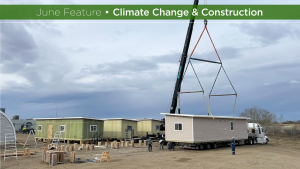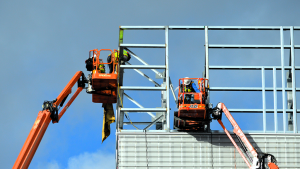EDMONTON, ALTA. – The City of Edmonton is using the future to study the past and speed up present building.
Edmonton has been awarded a Smart 50 award in the digital transformation category by Smart Cities Connect for an artificial intelligence (AI) solution for safety code inspections. The Smart 50 Awards recognize cities with projects that are applied at and have impact at the municipal scale.
The software predicts whether homebuilders will pass low-risk inspections and enables the city to automatically pass inspections for builders with good track records, allowing “valuable staff resources to focus on more complicated inspections that pose a higher risk to public safety and shortens timelines for builders,” a City of Edmonton release stated.
“We’re in the lucky position where we have over a decade of good quality data where we know the outcome. We leveraged over 600,000 inspections and trained the AI model to see patterns in the inputs we have to see if an inspection is low-risk and likely to pass the first time,” data scientist Ben Gready said. “We’re only looking at single-family detached homes and we look at four of the lowest-risk factors: the plumbing stack, plumbing groundworks, the HVAC stack and HVAC concealed ducts,” Gready added.
Other data collected and analyzed include attributes about the contractor, geographical and building information and previous inspections, he said.
“Nothing’s changed from the builder’s end. The builder comes in, applies for permits, we apply for inspection, we get that data in (the system) and that helps retain the model as they go,” City of Edmonton director of codes and inspections Juan Monterrosa said.
He added the AI model can be extended past single-family units to other types of buildings.
“It’s very adaptable and the next phase is to look at row housing and multi-unit dwellings. The data is there and it’s similar to single-family. The risk profile is a little different but that the next one (we’ll do),” he said.
Development of the AI model was a “huge lesson in change management and risk management,” Monterrosa said.
“We looked at it internally, brought in external stakeholders from industry and held workshops,” he said.
Gready said a dashboard system was developed to provide feedback and track the model.
“We also wanted to develop the AI as both cutting edge and appropriate to our use case. We took it to several conferences and got great feedback, took it to the University of Alberta and a technology conference in Chicago where we got really good feedback on implementation. It gave us the confidence we were going in the right direction,” Gready said.
“The system has been operational since October 2019, and our intent here is to discover how we deploy our resources. We have a highly trained team here and we want to focus on the higher risk aspects of public safety,” Monterrosa said.
“In Alberta we have a building code as of November, and we have to train the AI as to how that changes inspections as well,” he added.
“We’re constantly recording new inspections and using that data to update our model every quarter,” Gready said.
“This is part of helping to bring innovation to construction, using data to make these decisions,” Monterossa said.
Edmonton mayor Don Iveson said in a statement artificial intelligence will also assist government in fostering innovation and efficiency.
“I truly believe the next frontier for governments is how we can use data and AI to make better evidence-based decisions. To know that we’re leading the way in this rapidly-evolving field while making things easier for businesses is very encouraging,” Iveson said.










Recent Comments